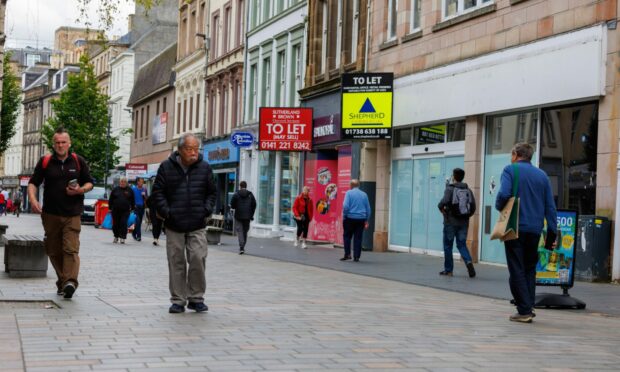A £1 million machinery investment programme, fresh ranges of environmentally-friendly products and a new website for its customers around the globe.
Halley Stevensons produces and supplies waxed cotton fabrics, and its client list includes Barbour’s – which is famous for its waxed jackets.
As part of the Dundee firm’s investment programme, new dyeing equipment has already been installed.
But a new main drying/coating line has been put back a few months due to disruption at suppliers caused by coronavirus.
There are currently 38 employees and there are hopes to add more people in the future as the business grows.
The managing director of Halley Stevensons is long-serving staff member James Campbell, who started out with the firm in 1991 as a trainee dyer after graduating with a Hons BSc in chemistry.
He told the Courier: “We have been manufacturing textiles since 1864, with our Baltic Works factory beginning life as a jute mill and soon evolving into specialist dyeing and finishing.
“Halley Stevensons (formerly Francis Stevensons) has pioneered the development of waxed cotton for over 100 years, with our first patent being awarded in 1910, for ‘cleaning and waterproofing textiles’.
“Our experience in creating and perfecting waterproof textiles has allowed us to develop many unique products over the years.
“These are, to this day, entirely produced, dyed and finished at the Baltic Works facility.
“Our commitment to reinvest in our business, and indeed Dundee, allows us to offer highly customisable waxed cotton products at superior quality and competitive prices.”
James said the secret of the firm’s long-running success is a combination of progressive R&D (research and development) and being flexible to market changes.
“The business has diversified several times over the last 156 years, but stayed true its pioneering approach and adapting to market changes.
“Being able to react quickly to the ever-changing tides of fashion as well as economic factors has allowed us to innovate throughout the decades.”
The MD said Halley Stevensons has almost been a hidden gem in the city.
“We have always been part of the landscape, but quietly doing our thing in the background.
“Dundee has changed dramatically in recent years. The addition of the V&A to our Waterfront has brought more interest to the city. It allowed us to be involved in many collaborations with the museum and designer clients we work with and heightened our profile within the city.”
Halley Stevensons specialises in waxed cotton for apparel and luggage fabrics.
James said: “Over the last six years, the product line has been developed extensively to add washable wax versions and dry weatherproofed cottons.
“Our line now includes an ever-growing range of organic cotton treated with natural waxes and sustainable finishes. Our main markets are UK, the EU, US and Australia.”
The Coronavirus lockdown earlier this year was a disappointment for Halley Stevensons – it came just as the firm enjoyed a record first quarter, following on from five years of 20% annual growth.
The impact of the virus has led to a 15% hit to turnover, but the MD said early signs are things are slowly starting to recover.
“We furloughed most of our staff from the start of April, but began to bring people back gradually to make cotton fabrics for NHS Tayside scrubs and masks.
“We have not lost any customers, and things are gradually improving. Our biggest fear was that COVID-19 would mothball new product developments and creative projects. Encouragingly, our customers are back developing new products for the following season.”
Looking to the future, James said Halley Stevensons market is driven by sustainability and low-impact manufacturing.
“We feel that our company and products fit well for future development.
“We are busy creating new ranges of environmentally-friendly outerwear products using recycled/organic cottons and making recyclable products.
“Outside factors such as Brexit and Coronavirus are difficult to predict in terms of impact, meaning the business needs to be adaptable and quick to react.
“We have recently invested in a new website, so that customers can view our collection online in a more dynamic and informative platform and order fabric samples directly. It was crucial we launched this in the midst of the pandemic to reach customers old and new due to travel restrictions in place and tradeshows ultimately being affected.”














